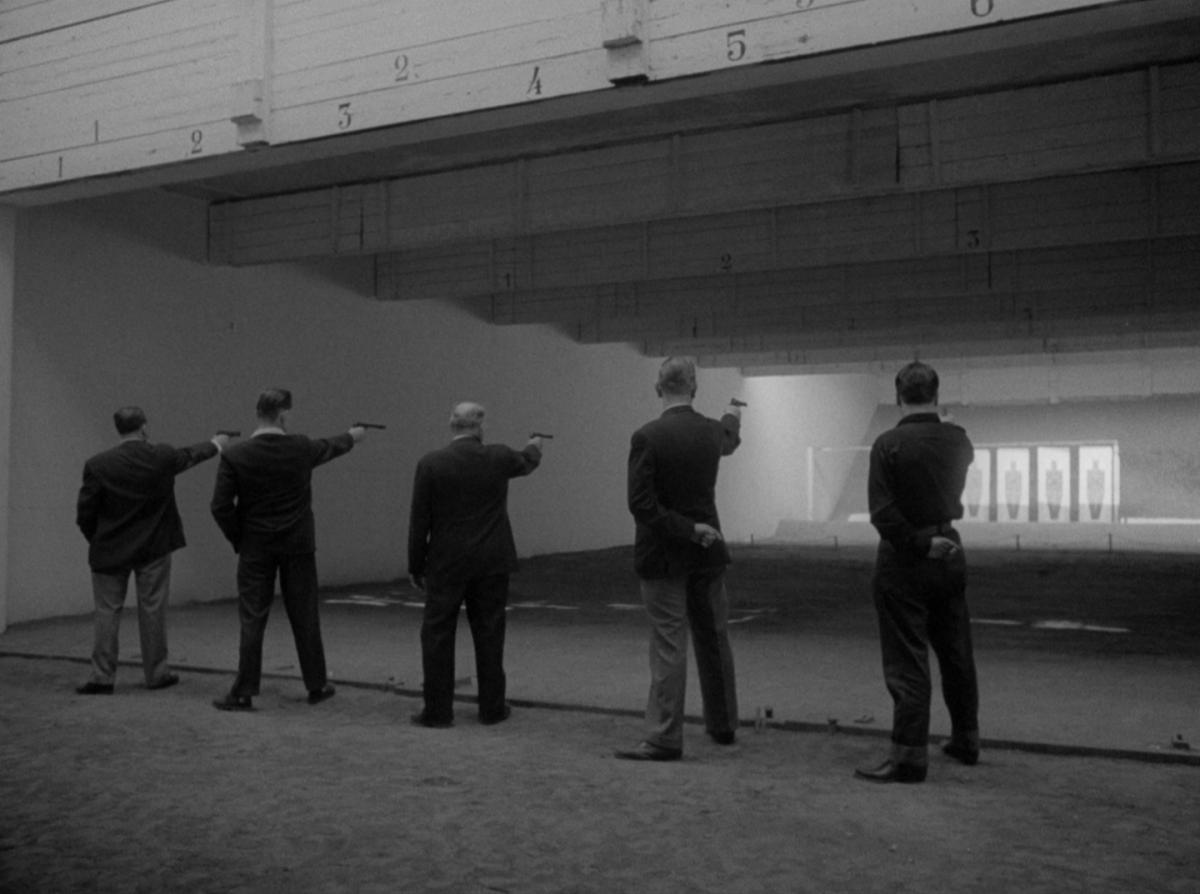Edmond Bernhard
Born in Halle in 1919

“Nothing can fix the finite which lies between the two infinities that enclose and flee from it.” This formula by Pascal may very well apply to the films of Edmond Bernhard, the most brilliant filmmaker Belgium has ever known. His entire oeuvre essentially consists of five short films made between 1954 and 1972, less than two hours of screening time in total: Lumière des hommes (1954), Waterloo (1957), Belœil, ou Promenade au château de Belœil (1958), Dimanche (1963) and Échecs (1972).
In the work of this self-taught filmmaker (one should rather say poet or stylite), every part of the image and every detail of the light or the movement of the camera have been thought out, rigorously tested, and composed with the precision, intelligence and sensibility of a master, lending his films an astounding and truly spiritual splendour. A film by Edmond Bernhard is an important thing, not an object of consumption or art that is shaped more or less carefully according to current fashions.
While others wear themselves out making films without thinking, Bernhard questions himself like a yogi, his camera participating in his questioning. Lumière des hommes was a film about Mass. Sober and surprising. Bresson-esque. Waterloo and Belœil, which would have become banal tourist documentaries in the hands of anyone else, are poetic meditations on the vanity of things and life. Like an alchemist or a magician transfiguring reality, Bernhard turns the insignificant – a tree that has been cut down, a museum visit – into History and Time, dwelling rather on the dust that covers the windows, the meaningless words of a guide, the hair of a young girl admiring herself in a mirror, the dead leaves strewn over the ground or the sky-circling birds indifferent to the struggles and feelings of humankind.
Musical scores, one should say. Dimanche started out as an educational film about leisure. Bernhard “diverts” his commission and avoids the trap of a “thematic” film. Without resorting to commentary, by using a clever montage of extraordinary images that sublimate commonplaces (Sunday boredom, the changing of the guard, children playing, a runner in the woods, a football match...), he manages to construct an exceptional work on the feeling of emptiness and the fossilization of the world.
Edmond Bernhard has always searched out difficulty, dead ends, dead-end roads where he could lose himself ad infinitum. His labyrinthine leanings naturally led him to conceive a film about chess (Échecs). It’s an animated film. You don’t get to see the players. Just the progression and movement of the thirty-two character pieces over the course of a world championship game. The film’s originality lies in the fact that Bernhard tried to show the invisible, that is to say the game that is played in the minds of the opponents, who analyze, calculate and prepare their move before making it, which is just the result of a long reflection. These junctions, these “digressions”, these mental ramifications Bernhard has translated cinematographically by way of an ascetic mise-en-scène that avoids dramatization and psychological fictionalization. This is not a film for specialists, and you don’t have to be John Cage or Marcel Duchamp to appreciate this unconventional poem, which is more of a haiku or a zen garden than a film in the ordinary sense.
Edmond Bernhard’s chessboard probably ended his interference in cinema definitively. Everything is brought together and synthesized admirably, but also refined to its ultimate depth: the mystery of inner thought, the stroll into oblivion and indifference, the painting of nothingness, all of which was the substance of his earlier films. But in Échecs, there is no room for deserted museums, for muffled silences and decomposed skeletons. No more axe blows, no more bird flights. Nothing but black and white pieces moving through space and time. Emptiness and death. The very essence of cinema.
This text originally appeared as "Bernhard Edmond" in Guy Jungblut, Patrick Leboutte et Dominique Païni, dir., Une encyclopédie des cinémas de Belgique (Paris: Musée d’Art moderne de la Ville de Paris - Yellow Now, 1990).
With thanks to Boris Lehman and Guy Jungblut.
This text is published in the context of Seuls: Short Work 1’, tonight at 20:30 on Avila. You can find more information on the event here.

